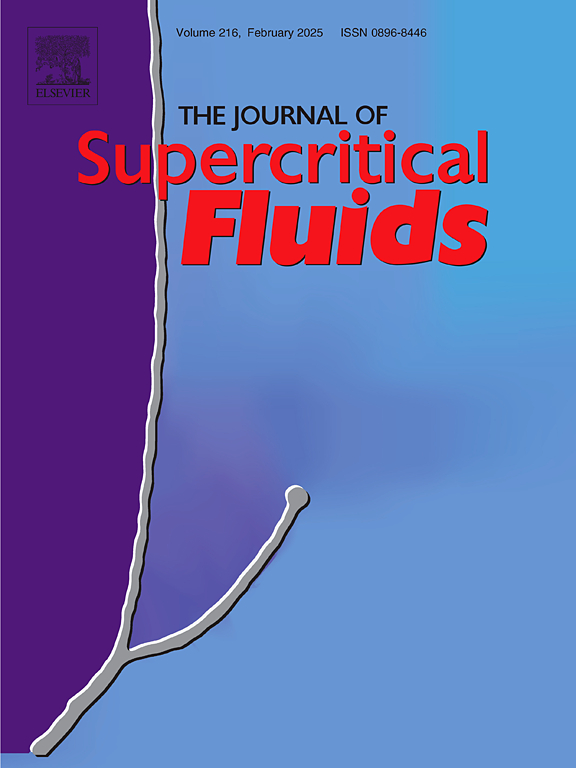闪蒸减压纺丝溶液中聚乙烯溶解和分散的多尺度模拟
IF 4.4
3区 工程技术
Q2 CHEMISTRY, PHYSICAL
引用次数: 0
摘要
在本研究中,利用分子动力学(MD)模拟研究了二氧化碳-聚乙烯体系在不同条件下的溶解行为。此外,利用计算流体动力学(CFD)模拟研究了聚乙烯颗粒在溶剂中不同过程的分散行为。结果表明,在压力为30 MPa,温度为440 K的条件下,二氧化碳、乙醇、丙酮和甲苯的摩尔比为90:3:3:4,可获得最佳的溶解效果。溶解机理主要归因于乙醇与丙酮之间的强氢键相互作用。在搅拌方面,将安装距离减小到5 cm,将相对距离减小到3 cm,将搅拌速度增加到10 rad s−1,并在容器中安装8个挡板,可以实现颗粒混合过程中的有效分散。这些多尺度模拟结果为闪蒸减压纺丝的溶液制备提供了重要的见解。本文章由计算机程序翻译,如有差异,请以英文原文为准。
Multiscale simulation of polyethylene dissolution and dispersion for flash pressure release spinning solutions
In this study, the dissolution behavior of the carbon dioxide-polyethylene system is investigated under various conditions using molecular dynamics (MD) simulations. In addition, the dispersion behavior of polyethylene particles in the solvent is examined across different processes using computational fluid dynamics (CFD) simulations. The results indicate that optimal dissolution is achieved by incorporating carbon dioxide, ethanol, acetone, and toluene at molar ratio of 90:3:3:4 under pressure of 30 MPa and temperature of 440 K. The dissolution mechanism is primarily attributed to the strong hydrogen bonding interactions between ethanol and acetone. In terms of agitation, effective dispersion during particle mixing can be achieved by reducing the installation distance to 5 cm, decreasing relative distance to 3 cm, increasing agitation speed to 10 rad s−1, and installing eight baffles in the vessel. These multiscale simulation findings provide key insights for the solution preparation of the flash pressure release spinning.
求助全文
通过发布文献求助,成功后即可免费获取论文全文。
去求助
来源期刊

Journal of Supercritical Fluids
工程技术-工程:化工
CiteScore
7.60
自引率
10.30%
发文量
236
审稿时长
56 days
期刊介绍:
The Journal of Supercritical Fluids is an international journal devoted to the fundamental and applied aspects of supercritical fluids and processes. Its aim is to provide a focused platform for academic and industrial researchers to report their findings and to have ready access to the advances in this rapidly growing field. Its coverage is multidisciplinary and includes both basic and applied topics.
Thermodynamics and phase equilibria, reaction kinetics and rate processes, thermal and transport properties, and all topics related to processing such as separations (extraction, fractionation, purification, chromatography) nucleation and impregnation are within the scope. Accounts of specific engineering applications such as those encountered in food, fuel, natural products, minerals, pharmaceuticals and polymer industries are included. Topics related to high pressure equipment design, analytical techniques, sensors, and process control methodologies are also within the scope of the journal.
 求助内容:
求助内容: 应助结果提醒方式:
应助结果提醒方式:


